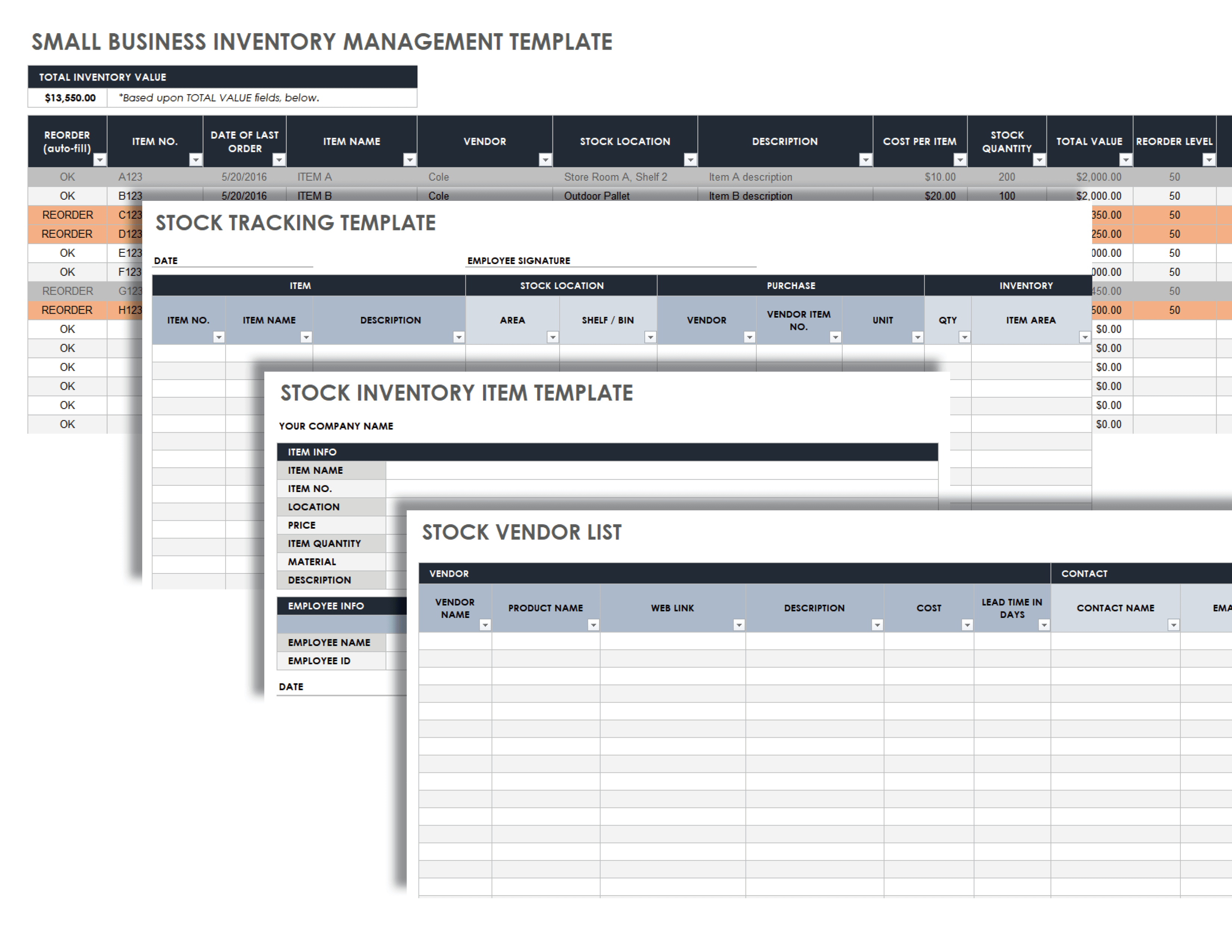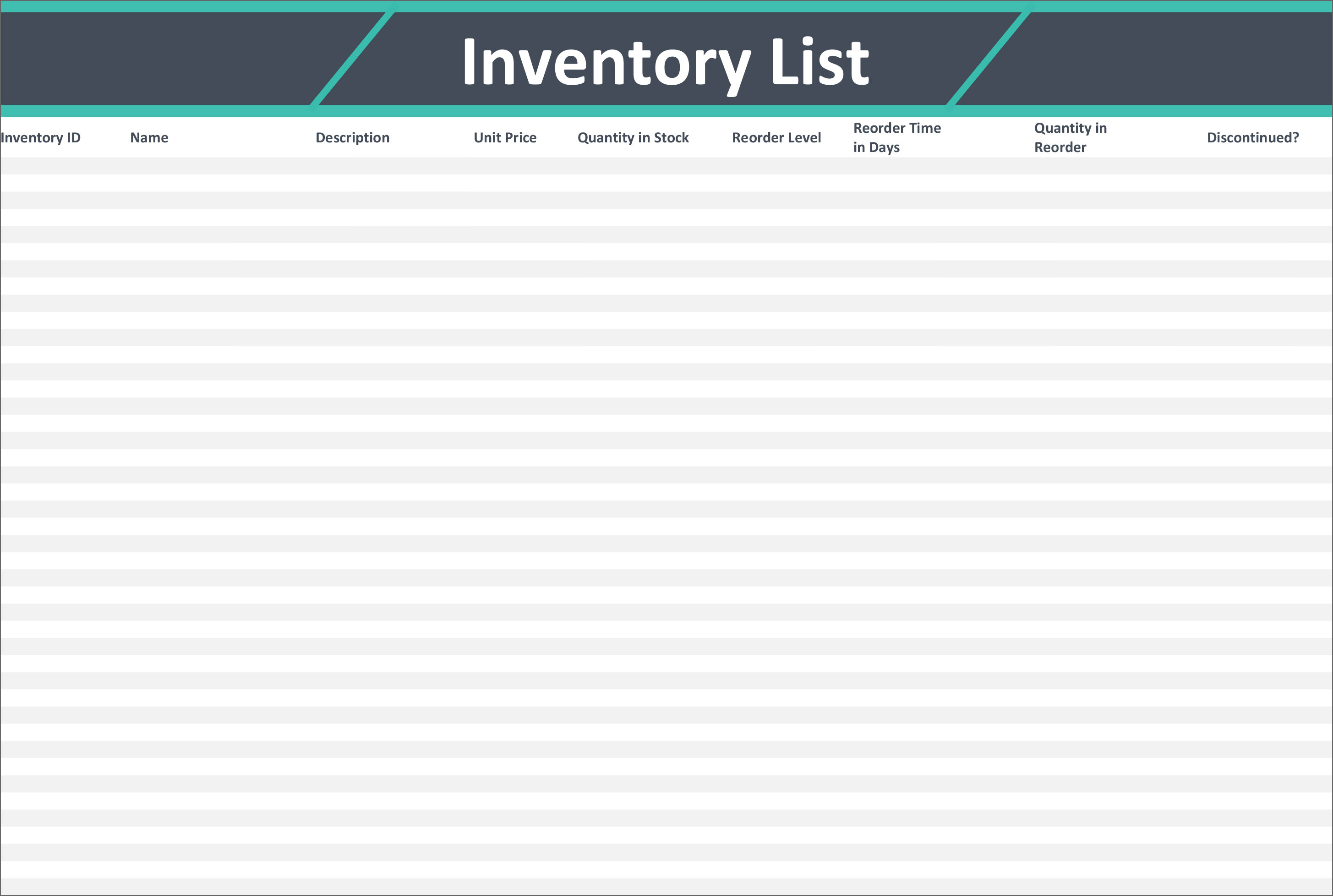Delve into the realm of business inventory list templates, indispensable tools for businesses seeking to streamline their inventory management processes. These templates provide a structured framework to organize, track, and maintain inventory data, empowering businesses with real-time visibility into their stock levels and facilitating informed decision-making.
By leveraging a well-crafted business inventory list template, businesses can enhance their efficiency, minimize losses due to overstocking or understocking, and optimize their supply chain operations. Embark on this comprehensive guide to learn the art of creating, customizing, and utilizing business inventory list templates effectively.
Introduction
Effective business inventory management is crucial for businesses to optimize their operations, minimize costs, and enhance customer satisfaction. It involves tracking and managing the quantity, location, and status of items in inventory, enabling businesses to make informed decisions about purchasing, production, and sales.
Using a business inventory list template provides a structured and organized approach to inventory management. It helps businesses streamline the process, reduce errors, and gain valuable insights into their inventory levels.
Benefits of Using a Business Inventory List Template
- Improved Accuracy:Templates provide a standardized format for recording inventory data, reducing the risk of errors and inconsistencies.
- Enhanced Efficiency:Templates streamline the inventory management process, saving time and effort by providing a predefined structure for data entry and analysis.
- Better Visibility:Templates offer a comprehensive view of inventory levels, enabling businesses to quickly identify stockouts, overstocking, and potential issues.
- Informed Decision-Making:Templates provide data that supports informed decision-making regarding purchasing, production, and sales, ensuring optimal inventory levels and profitability.
- Reduced Costs:Effective inventory management using templates helps businesses avoid overstocking, which can lead to storage costs and potential losses due to spoilage or obsolescence.
Creating a Business Inventory List Template

Creating a business inventory list template is essential for organizing and tracking your stock. A well-organized inventory list can help you avoid stockouts, overstocking, and other inventory-related issues.
Organizing and Categorizing Inventory Items
To create an effective inventory list template, you need to organize and categorize your inventory items. This will make it easier to find and track items, and it will also help you to identify trends and patterns in your inventory.
There are a number of different ways to organize and categorize inventory items. One common method is to use the ABC classification system. This system classifies items into three categories: A, B, and C.
- A itemsare the most important items in your inventory. They are typically high-value items that are essential to your business operations.
- B itemsare less important than A items, but they are still important to your business. They are typically medium-value items that are used regularly.
- C itemsare the least important items in your inventory. They are typically low-value items that are not essential to your business operations.
Another common method for organizing and categorizing inventory items is to use the VED classification system. This system classifies items into three categories: vital, essential, and desirable.
- Vital itemsare essential to your business operations. They are typically high-value items that are used frequently.
- Essential itemsare important to your business operations, but they are not as critical as vital items. They are typically medium-value items that are used regularly.
- Desirable itemsare not essential to your business operations, but they are still valuable. They are typically low-value items that are used occasionally.
Once you have organized and categorized your inventory items, you can create a template for your inventory list. The template should include the following information:
- Item name
- Item description
- Item number
- Item quantity
- Item location
- Item value
You can also include additional information on your inventory list template, such as the item’s reorder point, safety stock level, and lead time.
Using a Business Inventory List Template
A business inventory list template can streamline inventory tracking and management. It provides a structured framework to capture essential inventory data, ensuring accuracy and consistency.
To use the template effectively, follow these best practices:
Updating and Maintaining the Template
- Regular Updates:Update the inventory list regularly to reflect changes in stock levels due to purchases, sales, or adjustments.
- Accurate Data Entry:Ensure that all inventory data is entered accurately, including item descriptions, quantities, and unit prices.
- Periodic Reviews:Conduct periodic reviews of the inventory list to identify discrepancies or errors and make necessary corrections.
- Collaboration:Encourage collaboration among relevant stakeholders (e.g., purchasing, warehouse, and sales teams) to ensure that inventory data is shared and updated in a timely manner.
Types of Business Inventory List Templates

Various types of business inventory list templates exist, each tailored to specific needs and industries. Understanding the advantages and disadvantages of each type can help businesses choose the most suitable template for their operations.
Static Inventory List Templates
- Advantages:
- Simple and easy to use
- Provide a basic overview of inventory levels
- Suitable for small businesses with limited inventory
- Disadvantages:
- Do not track inventory movement or changes
- Require manual updates, which can be time-consuming
- Not suitable for businesses with complex inventory management needs
Dynamic Inventory List Templates
- Advantages:
- Track inventory levels in real-time
- Automate inventory updates, reducing manual errors
- Provide insights into inventory trends and patterns
- Disadvantages:
- More complex to implement and maintain
- Require integration with other business systems
- May require additional hardware or software
Specialized Inventory List Templates
- Advantages:
- Tailored to specific industries or inventory types
- Include industry-specific fields and calculations
- Streamline inventory management for specialized businesses
- Disadvantages:
- Limited availability and customization options
- May require additional training or support
- Not suitable for businesses with diverse inventory needs
Customizing a Business Inventory List Template
Customizing a business inventory list template allows you to tailor it to the specific needs of your business. Here are some tips for customizing your template:
Consider the specific information you need to track for each item in your inventory. This may include details such as the item’s name, description, quantity, location, and value. Ensure the template includes fields for all of the relevant information.
Adding Additional Fields or Sections
You may also want to add additional fields or sections to your template to track specific information relevant to your business. For example, you could add a field to track the reorder point for each item or a section to track inventory adjustments.
Using Technology to Manage Inventory

In the modern business landscape, technology plays a crucial role in inventory management. By leveraging specialized software and tools, businesses can streamline and enhance their inventory tracking and management processes, leading to improved efficiency and cost optimization.
Inventory management technology offers a comprehensive suite of features that empower businesses to:
Track Inventory Levels
- Monitor stock levels in real-time, providing accurate visibility into inventory status.
- Receive alerts when inventory falls below predefined thresholds, ensuring timely replenishment.
Automate Inventory Processes
- Automate tasks such as order fulfillment, purchase order generation, and stock adjustments, reducing manual labor and errors.
- Integrate with other business systems, such as accounting and sales, for seamless data exchange.
Enhance Inventory Planning, Business inventory list template
- Analyze historical data and demand patterns to forecast future inventory needs.
- Optimize inventory levels to minimize stockouts and excess inventory, improving cash flow.
Mobile Accessibility
- Access inventory information and perform tasks remotely via mobile devices, ensuring flexibility and real-time updates.
- Empower warehouse staff with handheld scanners for efficient inventory tracking and updates.
Closing Notes

In conclusion, business inventory list templates serve as a cornerstone for efficient inventory management, enabling businesses to gain a competitive edge. By embracing the insights and strategies Artikeld in this guide, you can develop and implement a customized template that aligns with your specific business needs.
Remember, a well-managed inventory is the backbone of a thriving enterprise, empowering you to make informed decisions, reduce costs, and maximize profitability.
